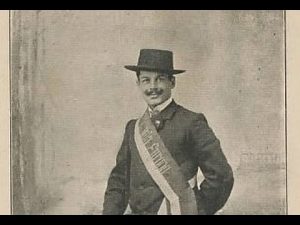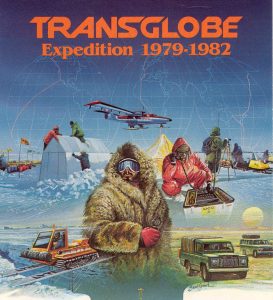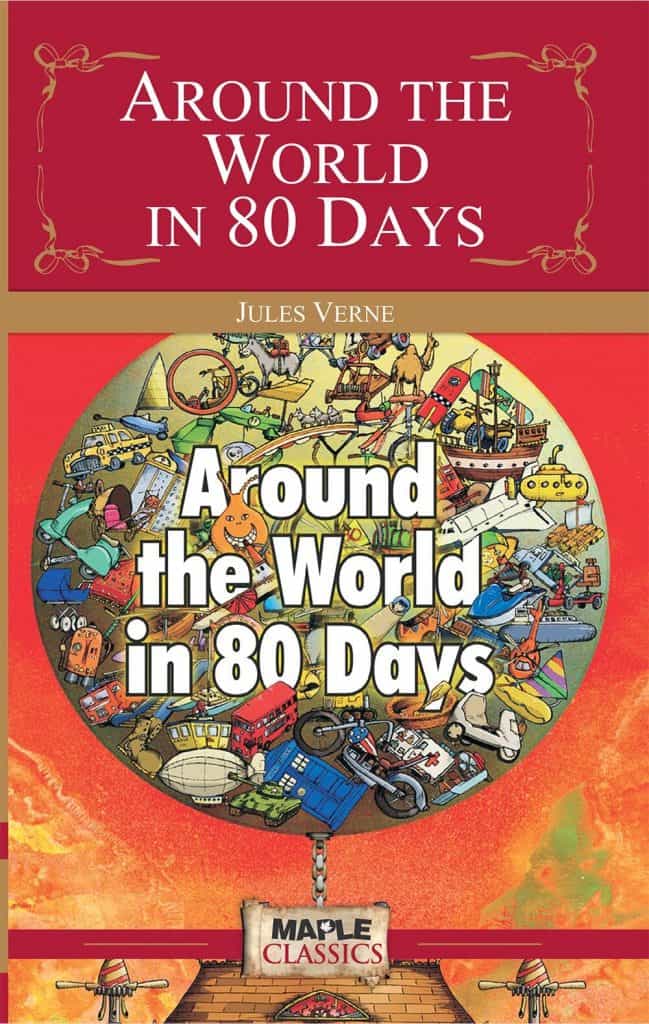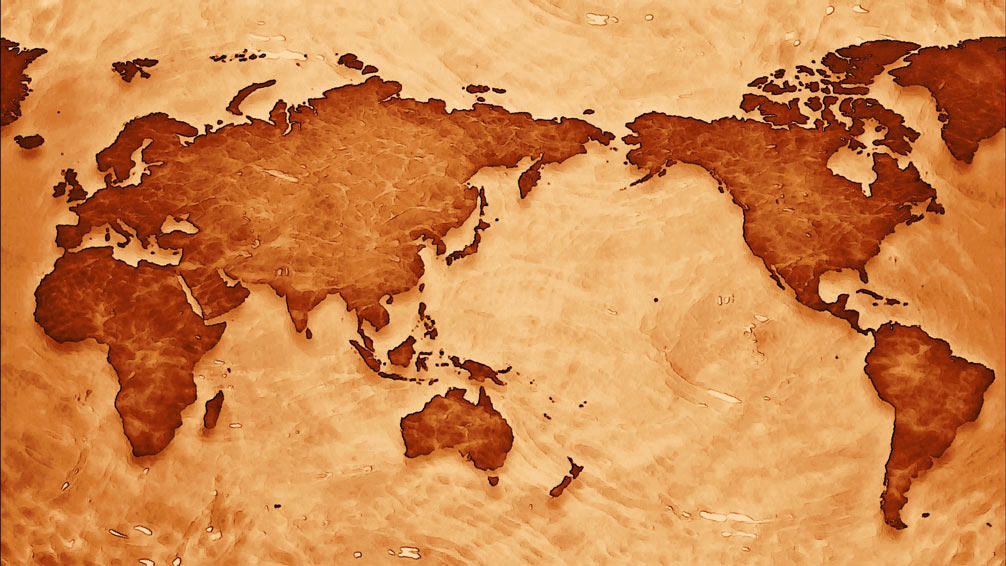Table of Contents
Historical Trips Around the World

Countless people and groups attempted to travel around the world throughout History. It would be impossible for me to list all of them on an article like this one. But let’s select the most significant ones, starting with the second round-the-world trip, that followed the stunt of Ferdinand Magellan and his crew.
Francis Drake managed to captain a round-the-world trip from beginning to end aboard the Golden Hind. With the support of Queen Elizabeth, it sailed off in 1577 planning to sail around South America and attack the Spanish colonies on the west coast of that continent. The fleet had five small ships, but it managed to seize a Spanish galleon full of treasures. Francis Drake reached Plymouth on 26 September 1580, to where the queen herself traveled to knight him.
In the same year Drake completed his journey, Franciscan Ignacio de Loyola was sailing from Cadiz on a round-the-world trip. Imagine how adventurous a trip like this was at the time, how long it took, and how risky it was. But none of that dissuaded the Franciscan priest. He visited the Philippines and reached China where he was sentenced as a spy and arrested. He was a prisoner for one year but was later released and sent to Macau. He wandered through Japan before starting his journey back to Europe, where he reached in 1584.
But this wouldn’t be the end of it for Loyola. He left again the next year, on a round-the-world trip but in the opposite direction, becoming the first person ever to make this trip twice, and in different directions.
In the 17th century, there are records of nine round-the-world trips, five of them starting in Holland. Of those, I would like to highlight the one made by Francesco Carletti (between 1594 and 1602), the first one where someone was just a passenger, and the one made by Pedro Cubero (from 1670 to 1679) that included traveling by land.
In the next century, there are records of 14 sea trips around the world. William Dampier became the first person to complete three round-the-world trips. Jeanne Baré, disguised as a man, infiltrated the expedition led by Louis de Bougainville and became the first woman to travel around the world, between 1766 and 1799. And between 1787 and 1790, Robert Gray commands the first expedition sailing off North America.
In the 19th century, there were 19 sea trips around the world. It was a time of national firsts, with the following countries sending out ships on this kind of expedition: Russia, Argentina, United States, Denmark, Peru, and Austria (at the time the Austro-Hungarian empire had access to the sea). Between 1831 and 1836, the HMS Beagle traveled around the world, under the command of Captain Fitzroy and with a remarkable passenger on board: Charles Darwin. This expedition would have a crucial role in the scientific career of this young naturalist, that kept a travel journal later published as The Voyage of the Beagle.
In 1881, King Kalakaua of Hawaii became the first king to conclude a round-the-world trip. Three years later, Thomas Steven traveled around the world by bicycle, although he relied on ships for some parts of the way. In 1889, Nellie Bly brought Jules Verne’s novel Around the World in 80 Days to life. Better yet, she did it in just 72 days in steamships and trains, establishing a new record.
In the 20th century, individual trips lost part of their historical meaning. They became too easy, especially after World War II and the increasing number of commercial air routes. Even so, some journeys were remarkable for being the first.
It was the case of German Clärenore Stinnes and Swedish Carl-Axel Söderström who became the first people to drive around the planet. In the mid-1920s with the existing technology and lack of technical assistance that would be a much harder task than it is today.
It was a simple Adler Standard 6 car, without any special adjustment or preparation for the trip they were about to embark on. The travelers were sponsored by Adler, Bosch, and Aral and took a second car for support packed with spare parts and gear, driven by two mechanics.
The trip began in Germany, then through the Balkans until they reached Syria. Then they traveled through what is known today as Iraq and Iran and then headed to Moscow. The two mechanics abandoned the expedition at the Russian capital, and the adventurous couple continued to travel alone through the heart of Siberia, driving by Lake Baikal, and crossing the Gobi Desert. They reached Beijing and from there boarded on a ship with their car towards Japan.
They crossed the Pacific, with a stop in Hawaii, and reached South America. They drove by Lima, crossed the Andes and reached Buenos Aires, going up North towards Central America. They did the USA road trip from South to North, visiting Vancouver and then traveling to the opposite coast. They were welcomed by US President Herbert Hoover and in New York boarded a ship to Europe. They reached Le Havre from where they drove to Berlin, where they arrived on 24 June 1929. They traveled 47,000 km.
Just like in the movies, after they returned Carl-Axel Söderström got divorced and married Clärenore. They both lived in Sweden, where they had three kids and died of old age (him at 82, her at 96).
In 1980, Canadian Rick Hansen who was a wheelchair user after a car accident decided to go on a trip around the world. He was inspired by the story of his fellow countryman Terry Fox who had an amputee leg due to bone cancer and started the Marathon of Hope, running from Newfoundland to Vancouver. Fox never made it because the cancer spread, but he inspired Hanses to embark on an even bigger adventure.
He started his Man in Motion World Tour on 21 March 1985, departing from Vancouver. His start was low key but as he progressed he began attracting media coverage. Hansen’s trip covered 34 countries in 26 months. When he entered the BC Place Stadium on 22 May 1987, he had traveled for 40,000 Km and was welcomed by a frenzied crowd.
His adventure inspired the movie Heart of Dragon (2008) and the song St. Elmo’s Fire (Man in Motion) that became a hit with the movie St. Elmo’s Fire (1985), written in his honor by John Parr.
English Robert Garside became the first person to run around the world. After two failed attempts, he departed from New Delhi in India on his third and successful try. Robert left on 20 October 1997 and ran through Tibet and China, where he was arrested for a while due to issues with his documents.
He then flew to Japan, where he ran across, before taking another flight to Australia where he added a considerable number of kilometers to his running shoes. From there, he flew to the south of Chile where he begins a slow cross of all the American continent that he completes with the help of two flights.
He takes a flight from New York to South Africa, where he planned to run across the continent. This was at the time of the 9/11 attacks, so he decides to catch a plane to Morocco. He runs through Europe, from the South, until he reaches Turkey. He takes another flight to Egypt in an attempt to cross Africa again but doesn’t succeed. He then flies to Mozambique where he symbolically runs for a little. He leaves to India for the final leg of the trip where he reaches 13 June 2003.
- You can check out all the details of the trip, as well as photos and notes by Robert Garside.
Dumitru Dan: the first trip around the world on foot

Between 1910 and 1923, Romanian professor Dumitru Dan went in the first trip around the world on foot. Of course, he had to cross two oceans, but he continued to walk back and forth even when he was on board the ships. The trip was sponsored by Touring Clube de France who would award 100,000 French francs to whoever took the trip. At the time, Dumitru and his three fellow countrymen Paul Pârvu, George Negreanu, and Alexandru Pascu were young College students and took on the challenge.
They returned to Romania to gather information and resources and start training. They learned how to play the flute and dance traditional Romanian folk dances. They left in 1910 with their dog Harap. The next year, when traveling through Mumbai the Raja invited them to a feast. After the meal, three of them left to look for food for the next leg of the trip, but Alexandru Pascu stayed. That was the last time they would see him alive. He died of an opium overdose.
George Negreanu died two years later when the three friends were crossing a mountainous region in China. He was leading the way but didn’t see a crack in the middle of the trail, and he fell. His friends rescued him and took him to the hospital but he died before a doctor could see him. Lastly, Paul Pârvu didn’t resist the trip. Years of walking nonstop led to gangrene that eventually led to amputating both legs. They were in Jacksonville, Florida at the time. Paul Pârvu stayed behind with the dog, but he passed away in May 1915.
Only Dumitru finished. He had to put the journey on hold in 1916 because of World War I, but he would complete the challenge in 1923. Tragically, inflation took a big chunk off the award money. If we compare it to our current time, the initial award was around 500,000 Euros, but it shrunk to 40,000 by the time Dumitru got the money.
According to his records, he crossed five continents, 76 countries, and 1,500 cities, wearing out 497 pairs of shoes.
- Dumitru Dan was the first of a list of 12 people who walked around the world.
In our current century, there are records of the most bizarre trips:
- Mike Golding did two consecutive round-the-world trips in 2001, one in each direction. Between 2010 and 2012, Planet Solar became the first solar-powered ship to travel around the world.
- Between 2011 and 2012, Laura Dekker sailed around the planet alone. She was 14 when she started her trip.
- Between 2008 and 2011, Japanese Minoru Saito did the same thing as Dekker, except he became the oldest person to achieve it at age 77.
The Transglobe Expedition

Of all the trips around the world, this one was special: it was the first one, and perhaps the only one, that happened from North to South, crossing both poles. And without traveling by air!
The journey started in 1979 when British adventurers Ranulph Fiennes and Charles R. Burton left Greenwich towards the South Pole.
Ranulph Fiennes, a former military at the British SAS, had started to plan the trip in 1972 inspired by his wife Ginny, collecting all the sponsors he needed for the trip.
The travel’s original goal was to travel around the Earth from North to South, so most of the crossing was aboard Benjamin Bowring, a ship prepared for the polar nature. It’s a 65 meters long ship, built in 1952, and used on the set of Hell Below Zero, a 1954 film inspired by the book The White South.
They started the trip in the most straightforward way: crossing Europe, by driving across France and Spain, then crossing Africa, across the Sahara desert, and boarding the ship in Abidjan. Next stop would be South Africa.
On 22 December Bennie Bee, as the ship was known by the crew, sailed away to Antarctica. They reached the South-African base SANAE II on 4 January, unloading all the gear the team would need to face crossing the ice continent. Despite the reduced number of crew members, they had 200 tons of cargo, that they had to carry on snowmobiles to the first base at 72 55’S 3 29’W, about 290 km from the coast.
They built four flimsy cardboard shelters, with just a thin layer of insulation. They would have to do against the severe polar winter. One tent was for accommodation, one for the generator, one for the radio, and one for the VLF (Very Low Frequency) equipment.
When winter came, the shelters were immediately covered in ice, and they dug tunnels to store gear and supplies and to travel between shelters.
The season went by with a series of minor incidents: small fires, frost bites, carbon monoxide poisoning, personal conflicts caused by continued coexistence in a small space. And then in July, the generator was broken beyond repair.
On 5 August the sun returned which urged them to get everything ready to cross the continent by only three people: Ranulph, Oliver, and Charles.
They left on 29 October with Ollie, that would keep them company until the pole, each on a snowmobile pulling a sleigh carrying 700 kg of cargo. They reached the South Pole station on 14 December, three weeks ahead of schedule. They stayed there the 23, with air support responsible for their supplies. Crossing the Antarctic ended on 11 January.
They stayed for a couple of weeks at Scott Base. Bennie Bee arrived on 20 January, but they only left to New Zealand in mid-February. The crew organized events and presentations in Auckland and then in Sydney, Australia before they sailed to Los Angeles.
They stopped in Vancouver before tackling the Arctic. From there, the ship sailed to the mouth of the Yukon River in Alaska.
Crossing the North Pole seemed simpler, but too many things went wrong. At his wife’s request, Oliver abandoned the expedition. The crew that had crossed the South Pole was now down to two members. Later they found out the ice formation was more extensive than expected that year, blocking their passage and making them go on a detour around Devon Island.
They reached the Tanqueray Fjord on 31 August, beginning a slow walk until Alert Base, where they arrived almost one month later. They spent the Winter there waiting for five months before they could cross the North Pole. They left the comfort of the base on 12 February on two snowmobiles. But it was slow progress. A series of decisions to try to get back the lost time followed. They switched to sleighs that converted into canoes, handed to them by the air support team. Then Bombardier sent them new snowmobiles, but they were too light and couldn’t pull the sleighs. The crew had to bring back the previous snowmobiles. They began to pick up the pace until Ranulph, and his sleigh fell into the ice water.
There was a series of problems and incidents. If in the beginning it was too cold and icy to move forward, now there were holes on the ground that prevented the two men from going further.
They finally reached the pole in April and took on the rest of the crossing from there. As the ice quickly melted around them, they found themselves stuck on a block of ice which turned out to be their unexpected transportation. They drifted for more than three months before Bennie Bee could rescue them. The reunion happened on 4 August, coordinates 80 31’N 0 59’W. The first round-the-world trip from North to South was complete, with one last trip to London where they reached on 29 August 1982.
- Check the complete stories and photographs of the Transglobe Expedition and on Ranulph Fiennes’ official website.
The Journeys of Mike Horn
In 1999, Mike Horn started a round-the-world trip at the equator, but this was not the only thing that set his trip apart. In addition to following the most challenging route, facing the weather and the difficulties posed by nature at latitude zero, Mike did it on his own and his own transportation, without flights nor public transportation.
Mike Horn, a South-African living in Switzerland, sailed from the west coast of Africa to Brazil. He crossed that vast country on foot, on a bicycle, and a canoe, passing the unsurpassable Amazon and then the Andes until reaching the Equator, the country.
Next, he crossed the Pacific across the bigger islands in Indonesia, tackling the jungle in Borneo and Sumatra, until he boarded his reliable 8-meter long trimaran again. On the other side of the Indian Ocean, he reached the east coast of Africa, where he faced the last but not most simple leg of his adventure: crossing the black continent from coast to coast. He did it alone and on foot!
He reached his starting point 18 months later. He had completed his Latitude Zero Expedition which granted him a meeting in Rome with Pope John Paull II.
If this first round the world trip is not enough to add Mike Horn to the list of greatest explorers in our planet, his second large project will. He’s doing a second round the world trip from North to South, something only the British team Ranulph Fiennes and Charles R. Burton have done so far. Except Mike will raise the bar by taking the trip or at least crossing the polar continents alone.
At the time I’m writing this article, Mike is halfway through this great adventure, that you can follow on his official website or Twitter, and he’ll use a Class G car for the overland parts of his trip. Mike sailed from Monaco Yacht Club aboard his sailboat Pangaea toward Namibia. From there he crossed the desert to his birth country South Africa, where he boarded Pangaea again and sailed to the coast of Antarctica.
From now on, only the future will tell us what will happen, but the plan is to ski across the frozen continent, sail to New Zealand and Australia, explore Papua New Guinea on land, cross towards Asia and then immerse himself in the vastness of Siberia. At Kamchatka, he’ll board once more his sailboat to reach the Arctic. He’ll ski across that continent and then across Greenland, the world’s largest island. Once that is done, he’ll sail back on Pangaea to Monaco, his starting point.
If you don’t think project Pole2Pole is that demanding, you’ll change your mind after finding out that Mike Horn, the man who wants to ski across two polar continents, is 50 years old. What will he feel at the end of this adventure, when he becomes the only person to have done two round the world trips, one from North to South and one from East to West?
Around the World in Literature
The first literary reference to a round-the-world trip was written by Greek traveler Pausanias who lived around year 100, translated into French in 1797. Of course, the world according to Pausanias wouldn’t be the same as we know today. He meant the world of the classic age, which was limited to part of Europe, the Mediterranean basin, and the near East.
In 1699, Italian adventurer Giovanni Francesco Gemelli Careri wrote Voyage du Tour du Monde, published in France a few years later. That was probably the first written record of a round-the-world trip for fun and using only public transportation. The Italian wrote fascinating stories about the world in the 17th century, including the exotic Persia, the territories under the ruling of the Ottoman Empire, and the faraway Hindustan and China.
The trips around the world become popular in the mid 19th century thanks to the improvement of transportation that meant that the (almost) everyday man and woman could embark on such adventures.
In 1853, Jean Arago published Voyage autour du Monde. In 1871, the Union Pacific Railroad Company published Around the World by Steam, via Pacific Railway and, that same year, Edmund Planchut publishes Around the World in A Hundred and Twenty Days. Between 1870 and 1871, North-American William Perry Fogg travels around the world, writing his experiences and impressions on a series of letters published in the Cleveland Leader newspaper that later became a book published in 1872, Round the World: Letters from Japan, China, India, and Egypt.
The year 1872 was a decisive one in the History of around the world traveling. Thomas Cook organized the first tour of this kind, that took seven months and was documented in a series of letters that were made public the next year, Letter from the Sea and from Foreign Lands, Descriptive of a tour Round the World. More importantly, in 1872 Jules Verne published the book that would become the most famous and inspiring work for generations of travelers: Around the World in 80 Days.
Phileas Fogg and the Most Famous Round the World Trip

Jules Verne, the famous French writer who had already published “Journey to the Center of the Earth,” “In Search of the Castaways,” and “Twenty Thousand Leagues Under the Sea,” gave the world one of its most acclaimed masterpieces: “Around the World in 80 Days”.
Jules Verne’s books filled the imagination of generations, inspiring countless books and movies, and inspiring the work of science fiction writers.
Sometimes it’s hard to believe that Jules Verne wrote that book in the mid 19th century when you think about how current the events and technology seem. That is, of course, a characteristic of science fiction books but let’s face it, the idea of traveling around the world at that time was as crazy as the adventures of the Nautilus submarine in the deep ocean (Twenty Thousand Leagues Under the Sea).
But let’s keep things in perspective: at the time the book “Around the World in 80 Days” was published, the golden age of geography and world exploration had just begun. It would be another 15 years until the two officers of the Portuguese Navy, Roberto Ivens and Hermenegildo Capelo, crossed Africa from Angola to the opposite coast. If crossing a relatively narrow continent was considered a feat at the time, can you imagine traveling around the world in 80 days?
That’s what the friends of Phileas Fogg, the book’s main character, thought too. But let’s start at the beginning: the story begins in London, where our friend lives. His past is not revealed, but we know he’s wealthy, living well, and a regular customer at the Reform Club (a historic gentleman’s club in London). This is the place where a friendly argument starts after reading an article on the Daily Telegraph. According to the British newspaper, a new railway in India will make it possible to travel around the world in just 80 days. A piece of news to which Fogg’s friends react with a firm “impossible!”
But Fogg believes it can be done. A debate ensues and ends with a bet: the club members will give Phileas Fogg 20,000 Pounds (something like 2 million Euros today) if he departures the next day and returns to meet them 80 days later. It’s the first day of October so our friend must catch the train out of London the next day and return on 21 December.
Itinerary of Around the World in 80 Days

Pages full of travel adventures follow. The route of Fogg and his French servant Jean Passepartout takes them through Europe until the Italian city of Brindisi, on the heel of that country’s boot-shaped map, where they board a steamship to cross the Suez Canal (a 7-day trip) towards Mumbai (another 13 days).
Once in India, they travel by train to Calcutta (3 days) where they take a steamship to the south seas of China, getting off in Hong Kong (13 days). From there they take another ship to Yokohama in Japan (6 days). The most extended leg of the trip, across the Pacific Ocean, is of course done on another steamship to San Francisco. From the US West Coast to the East Coast, they take a train to New York (7 days). The adventure is almost complete. All they need is to cross the Atlantic Ocean to Liverpool (8 days). If you did the math, you’d notice that 79 days went by. Will Fogg and his loyal servant Passepartout reach the Reform Club in time to win the bet?
I can’t answer that question without spoiling the book, and it wouldn’t be fair to those who haven’t read the story yet.
Let’s talk a bit about the background of this book, Jules Verne’s most famous work at least in English. He wrote “Around the World in 80 Days” during the Prussian Franco War (1870-1871), at a time he was serving on the French Coast Guard. Shrewd, he realized the importance of three critical events in World History: the Suez Canal (1869), the railroad connecting San Francisco to New York (1869), and the railroad that crossed the Indian sub-continent (1870), which caused the bet to take place in the book.
For more than a century, and despite its success, Verne’s book was not taken seriously. There were no studies about “Around the World in 80 Days” until 2006. It wasn’t until the 21st century that we had good quality translations and essays and studies about this book by Verne.
Around the World on Television
Although there were several television shows produced around the name and the theme of trips around the world, most of them just rode the wave and had separate episodes produced in different parts of the world, without any logical sequence.
That is the case with Around the World, by Arthur von Wiesenberg, that despite the name it’s just a popular travel talk show, or Rev Runs Around the World produced by the Travel Channel. Famous Rev Runs travels around the world with his wife Justine and his children Russy and Miley with roundtrip plane tickets. Each episode documents the place they’re visiting and not the actual trip between locations. The sequence of episodes is random, without a natural route in mind.
There is, however, a television show produced by the BBC in 1989 focusing on the adventure of traveling around the world, “Michael Palin: Around the World in 80 Days”. Palin, a well-known British comedian, and actor, became even more famous after the show and one of the most popular travel writers of his generation.
The idea behind the series was to take Jules Verne’s classic and recreate the steps of the fictional character, Phileas Fogg, putting Michael Palin at the center of the action as the intrepid explorer who turns what the French author created into reality.
The conditions were the same: Palin had to travel around the world in 80 days without flying. Which he achieved, trying to stay true to Phileas Fogg’s original route. He took a crew of five people, appropriately named Passepartout, a reference to Fogg’s loyal French servant.
In the seven-episode series, Michael Palin departs from the real Reform Club on Pall Mall in London, crossing the English Channel, traveling overland to Venice where he boards a ship to Athens. He continues from there, with a pit stop in Crete, and reaches Egypt. A series of real-life adventures take place. In Innsbruck, the expedition came to a halt due to a strike of Italian railroad workers, and they lose the connection to Muscat, Oman in Saudi Arabia. A diplomatic marathon follows, and the group finally gets permission to drive across Saudi Arabia, a part of the trip that’s only shown in photos on the show.
In Dubai, they find a dhow (a traditional boat) willing to take them to India. When they reach Mumbai, they find out they’re a week behind on the fictional trip they wish to recreate.
After traveling by train, they reach the port of Madras, where it won’t be easy to find a ship to take them to Singapore. Palin finally reaches an understanding with a Yugoslavian captain that agrees to take him. But only one cameraman can travel with him.
On his way to Singapore, Palin hopes to reach in time to catch the boat for the next leg to Hong Kong. But by the time he reaches Singapore he finds out the ship has sailed. Just like in a Hollywood movie, they rent a speed boat that catches up to the cargo ship in no time.
After some time traveling in China, he boards a ship to Yokohama, just like Phileas Fogg, and then reaches Tokyo where he spends a night in a capsule hotel – a sign of modern times. The next day he boards a container ship to the coast of California for 11 dull days.
By the time he reaches the United States, he’s picked up the pace and is only behind two days. After dramatic episodes and a nerve-wracking race against time, he reaches New York. He embarks on the last leg of his trip, across the Atlantic on another cargo ship that takes seven days to reach the United Kingdom. Michael Palin completed his challenge in precisely 79 days and 7 hours.


